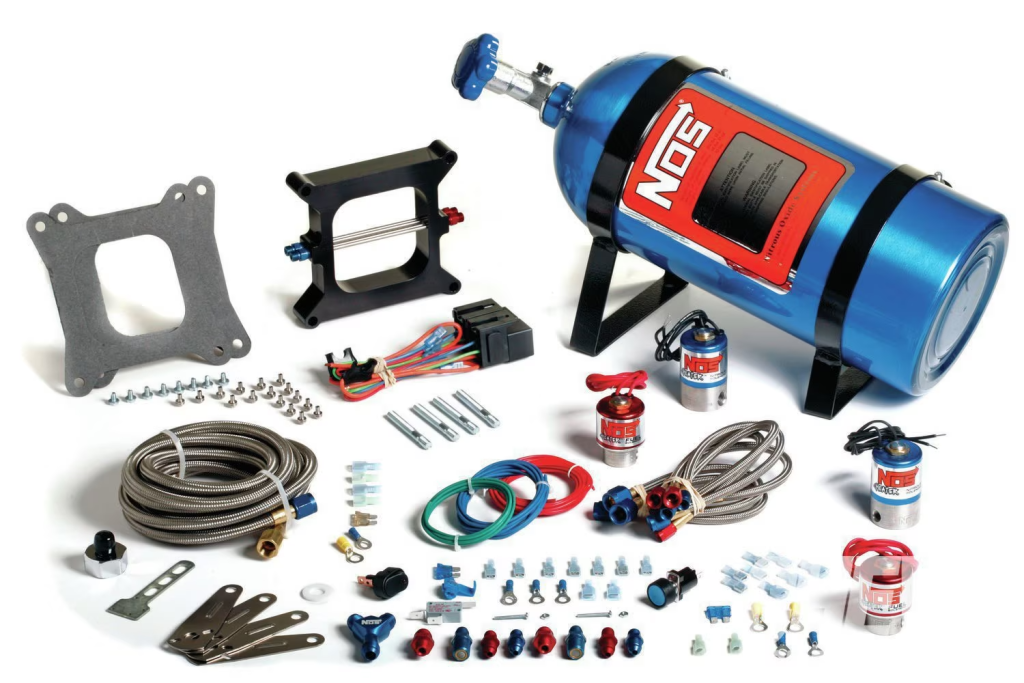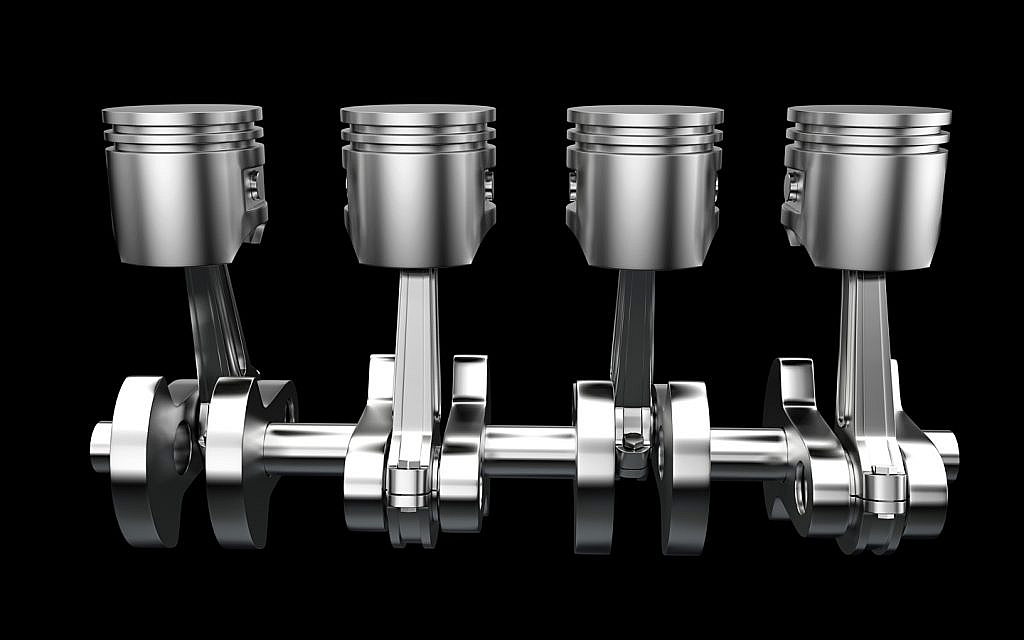The roar of engines thundered through the night as Jake’s modified muscle car surged forward, a blue nitrous oxide bottle gleaming behind the cockpit. With a quick flip of a switch, a massive burst of power erupted, propelling his car past the competition in a heart-stopping final sprint. The crowd erupted in cheers as Jake crossed the finish line, his victory sealed by the magic of nitrous oxide.
Nitrous oxide systems represent more than just a Hollywood movie trick—they’re a serious performance enhancement technology that can dramatically boost a vehicle’s horsepower. However, this power comes with a complex set of technical considerations and potential risks that every automotive enthusiast should understand.
How Nitrous Oxide Systems Work
The Basics
A nitrous oxide system relies on several key components working in harmony:
- Nitrous Oxide Bottle: Stores the nitrous oxide under pressure.
- Solenoids: Control the flow of nitrous oxide and fuel into the engine.
- Fuel Injectors: Ensure proper mixing of nitrous oxide and fuel.
- Nitrous Jet: Regulates the amount of nitrous oxide entering the intake manifold.

The Nitrous Oxide Cycle
- Release: When activated, nitrous oxide is released from the bottle.
- Mixing: It flows into the intake manifold, mixing with the fuel supply.
- Ignition: The mixture is drawn into the combustion chamber and ignited. The result is a sudden, dramatic increase in power output.
The Science Behind the Power
Nitrous oxide acts as an oxygen carrier. When heated during combustion, it breaks down, releasing oxygen molecules. This additional oxygen allows the engine to burn more fuel, creating a more powerful combustion cycle. The result? Increased horsepower and an exhilarating boost of acceleration.
Benefits of Nitrous Oxide Systems
Increased Horsepower
Nitrous oxide systems can provide a dramatic increase in power, ranging from 50 to over 300 horsepower, depending on the setup. For example, a stock car equipped with a moderate nitrous system might see a 100-horsepower boost, turning an ordinary ride into a track-worthy beast.
Improved Acceleration
By delivering additional power on demand, nitrous oxide can significantly reduce 0-60 mph times and quarter-mile drag race times. A vehicle with nitrous can often cut several tenths of a second off these metrics, making it a favorite among competitive racers.
Versatility
One of the most appealing aspects of nitrous oxide systems is their adjustability. Users can fine-tune the system to provide a modest power boost for daily driving or unleash its full potential for track events, making it a highly versatile upgrade for any performance enthusiast.
Potential Risks and Considerations
Engine Damage
While nitrous oxide is a potent performance enhancer, improper use can lead to serious engine damage. Without proper tuning, the increased power can strain engine components, leading to failures such as bent rods, blown gaskets, or cracked pistons. Additionally, detonation (an uncontrolled explosion in the combustion chamber) and pre-ignition (fuel igniting too early) are significant risks if the system isn’t set up correctly.

Safety Concerns
Improper installation or use of nitrous oxide systems can pose safety risks. A poorly secured nitrous bottle or faulty solenoid can lead to dangerous leaks or sudden pressure releases. Excessive power can also make the vehicle difficult to control, increasing the risk of accidents.
Legal Implications
Nitrous oxide use is regulated in many areas. Some jurisdictions prohibit its use on public roads, and improper use can result in fines or legal consequences. It’s important to research and adhere to local laws before installing a system.
Choosing the Right Nitrous Oxide System
Selecting the best nitrous oxide system for your vehicle requires careful consideration of your car’s specifications, performance goals, and budget. Here are the most important factors to evaluate:
Vehicle Type and Engine Size
Not all nitrous systems are compatible with every vehicle. Smaller engines or stock components might not handle the extra power without additional upgrades. For example:
- Four-cylinder engines: These engines are often paired with small, single-stage systems designed for moderate gains to prevent overloading components.
- V6 and V8 engines: Larger engines can typically handle dual-stage systems or higher-output setups, offering greater flexibility in power delivery.
- Forced induction engines: Turbocharged or supercharged vehicles require systems designed to integrate with the existing boost for maximum efficiency.
Understanding your vehicle’s limits is crucial to prevent damage and ensure safety.



Desired Power Increase
How much additional horsepower do you want? Nitrous systems can provide increases ranging from 50 horsepower to over 500. A modest boost of 50-150 horsepower is generally safe for most stock engines, while higher gains often require internal modifications, such as forged pistons or upgraded fuel systems.
Budget Constraints
Nitrous oxide systems are available at various price points. Simpler kits, such as dry systems, are more budget-friendly but may offer limited performance gains. Advanced setups like direct port injection systems come at a higher cost but deliver superior performance and reliability. Additionally, factor in expenses for professional installation, tuning, and maintenance.
Types of Nitrous Oxide Systems
Nitrous oxide systems come in several configurations, each suited for different needs and levels of expertise. Let’s break down the most common options:
1. Direct Port Injection vs. Fogger Systems
- Direct Port Injection: These systems deliver nitrous and fuel directly to each cylinder, ensuring even distribution. They are ideal for high-performance applications but require professional installation and tuning.
- Fogger Systems: Fogger kits use nozzles placed in the intake manifold to spray a mixture of nitrous and fuel. They are simpler to install and are great for moderate power gains.
2. Single-Stage vs. Dual-Stage Systems
- Single-Stage Systems: These systems release nitrous oxide in a single burst, making them suitable for short-duration applications like drag racing. They are easier to set up and maintain.
- Dual-Stage Systems: Offering more flexibility, dual-stage systems allow users to activate nitrous in stages. This helps manage power delivery and reduces stress on engine components, making them ideal for vehicles with variable performance needs.

Professional Installation
While some enthusiasts may be tempted to install nitrous oxide systems themselves, professional installation is highly recommended. A qualified technician ensures that:
- The system is properly installed to prevent leaks and inefficiencies.
- The engine is tuned to optimize performance while avoiding detonation and overheating.
- Safety features like pressure relief valves and switches are correctly implemented.
Improper installation can lead to severe engine damage or even catastrophic failure, making the investment in a professional installer worthwhile.
Conclusion
Nitrous oxide systems offer a cost-effective way to boost a vehicle’s horsepower significantly. However, selecting the right system involves evaluating factors such as engine size, desired power increase, and budget. Understanding the differences between direct port injection and fogger systems, as well as single-stage and dual-stage setups, is key to making an informed choice. Lastly, professional installation and proper tuning are essential to ensure safety and performance.
Nitrous oxide systems can unlock exciting levels of power and speed, but they come with responsibilities. Enthusiasts should research thoroughly, consult with experts, and consider their vehicle’s capabilities before making modifications. When used responsibly, a nitrous oxide system can transform a car into a high-performance machine, offering thrills and satisfaction on the road or track.
So, are you ready to give your vehicle the adrenaline shot it deserves? Dive into the world of nitrous oxide systems with knowledge and confidence—and remember, power is nothing without control!



